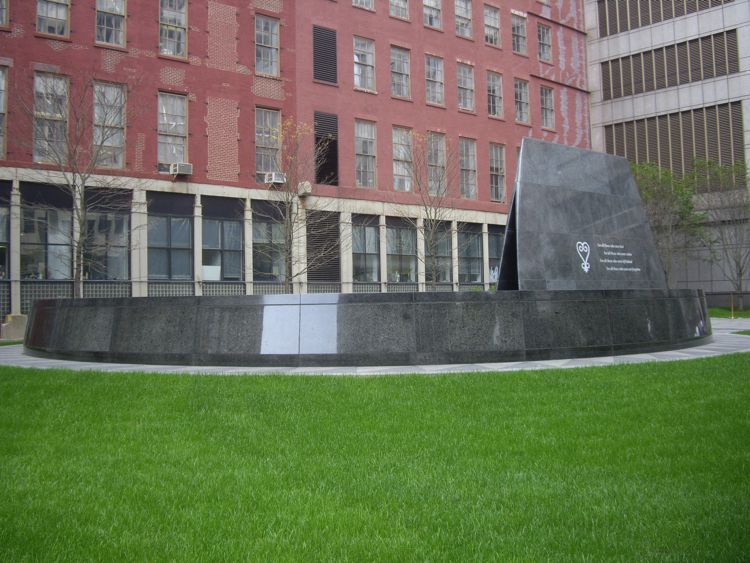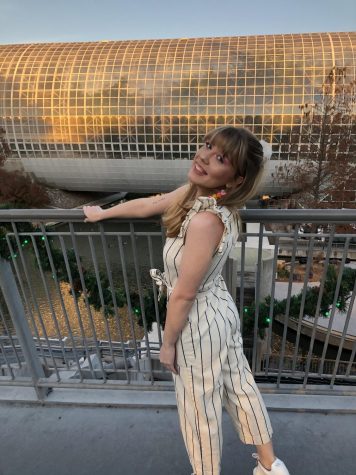Landmarks to celebrate Black culture and history around NYC
February 25, 2022
NYC is rich with Black culture and history, overflowing with museums, landmarks and Black pride celebrations. There are opportunities for learning more about the history of the city on every block, with many free options for students. Taking advantage of these opportunities to self-educate is especially important due to multiple states forbidding the teaching of critical race theory in schools.
African Burial Ground National Monument
One of the most important landmarks in NYC is the African Burial Ground National Monument, which is located near the University in lower Manhattan, and easily accessible for students with free entry. This is the largest excavated African burial ground and its unearthing has provided researchers with more insight into what it was like in the African community in 18th-century New York. In 2006, the burial ground was recognized and protected by the National Park Services as a national monument. Historians, anthropologists and researchers estimate the burial grounds in Manhattan as the final resting place of 15,000 to 16,000 free and enslaved Africans that passed from 1690 to 1790. Visitors will be able to see educational exhibits and videos that commemorate the lives of the African people in Manhattan and further educate people on the city’s history.
Schomburg Center for Research in Black Culture
Apart of the New York Library System and located in Harlem, the Schomburg Center is world-renowned for their work and research regarding African American history, African experience and the African diaspora. The Schomburg Center always has exhibitions for people to visit and learn about various aspects of their research. In celebration of the 10-year anniversary of the Black Comic Book Festival, the Schomburg is presenting: “Boundless: 10 Years of Seeding Black Comic Futures.” The exhibition highlights the history of Black comics and artists and, according to the Schomburg website it “illuminates the long history of Black comics and sequential art creators and their motivations to render humor, justice, irony, and futurism in Black aesthetic and liberatory practices from the Golden Age of comic books (1938-1956) to the present.” With panels, memorabilia, clips from past programs and even more material offered, there is plenty to explore at the Schomburg Center.
Afrofuturism, Carnegie Hall’s 2022 City-Wide Festival
Afrofuturism is described by Carnegie Hall as “an ever-expansive aesthetic and practice—where music, visual arts, science fiction, and technology intersect to imagine alternate realities and a liberated future viewed through the lens of Black cultures.” Afrofuturism is a cultural and artistic movement that focuses on Black culture in a way that imagines a future that does not ignore the past, but creates a brighter present. The festival began on Feb. 12 with a performance by Flying Lotus, a DJ, rapper and record producer who creates work that is creatively and musically stunning and unlike any other. When talking about his performance at the festival and Afrofuturism, the artist said, “I do believe Black people do have a different vision of the future, especially because we’ve seen so many different visions that don’t really include us. So we kind of have to create our universes, our own multiverses.”
The festival includes over 80 events such as concerts, performances, panels, exhibitions and online events that will continue into March with daily events to attend. This festival is a celebration of Afrofuturism in a way that has never been done before and will be an important look into the artistic and creative movement.
Langston Hughes’ Home- 20 East 127th St
Langston Hughes was a remarkable leader of the Harlem Renaissance, a Black author that made history and changed the world with his intellectual works, literature, and art. Hughes influenced many young Black writers as he provided an intimate and accurate look into the life of a Black person in America, something that had not yet been done in mainstream publishing. Hughes lived in this house for the last 20 years of his life, writing world-changing pieces such as “Notes of a Dream Deferred.” Author and poet Renée Watson created an initiative to preserve the home in an effort to keep relics of the Harlem Renaissance alive. A visit to Hughes’ home can be inspirational and a reminder of all of the history located right on the streets we walk.
View this post on Instagram
The Apollo Theater
The word iconic does not begin to describe the Apollo Theater located on 125th Street in Harlem. Since 1934, the theater has been known for its role in the cultivation of jazz, R&B and many other musical genres and its celebration of Black culture. In 1937, Apollo stood as the largest employer of Black theatrical workers both on and backstage. Phenomenal performances from all stars like Duke Ellington, James Brown, Billie Holiday, Gladys Knight and Ella Fitzgerald have echoed through the red-clad theater over the decades. Students can take a historical tour of the theater or view performances there.













